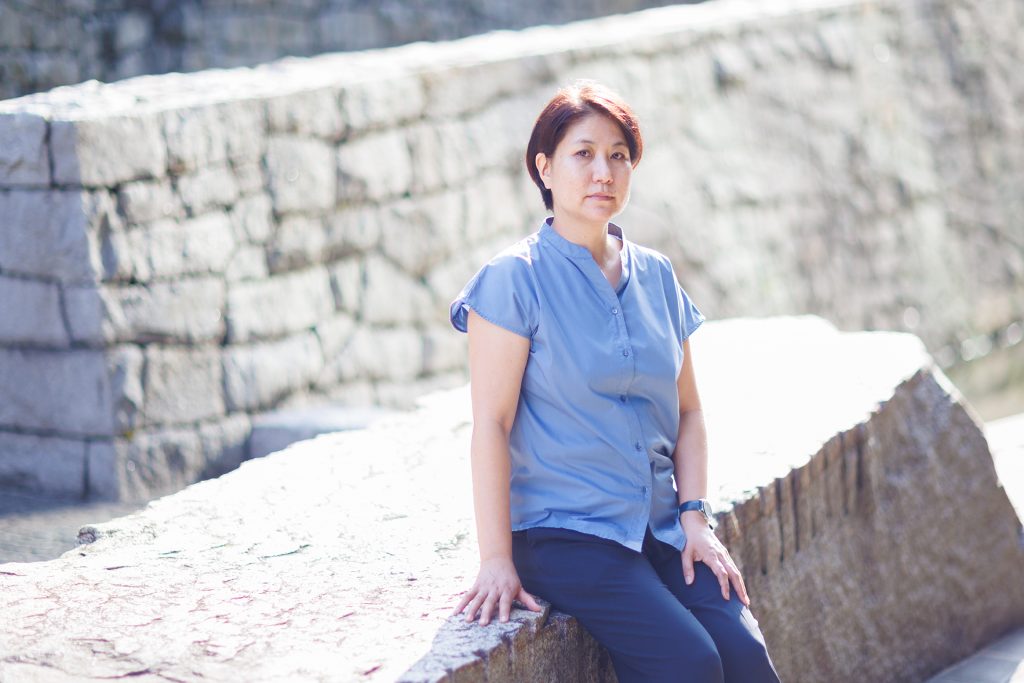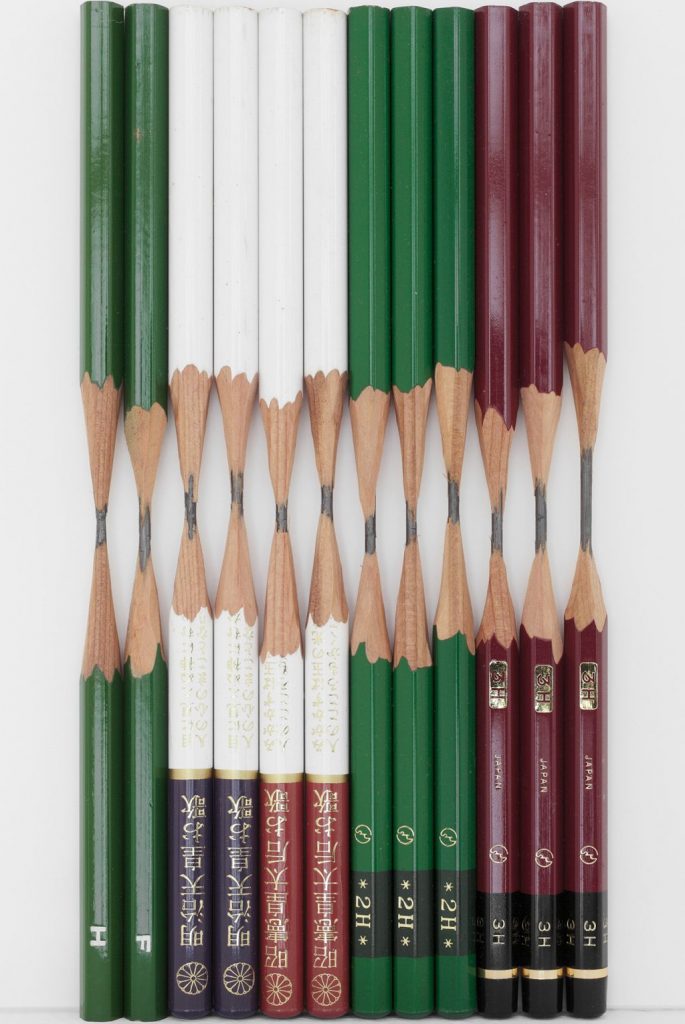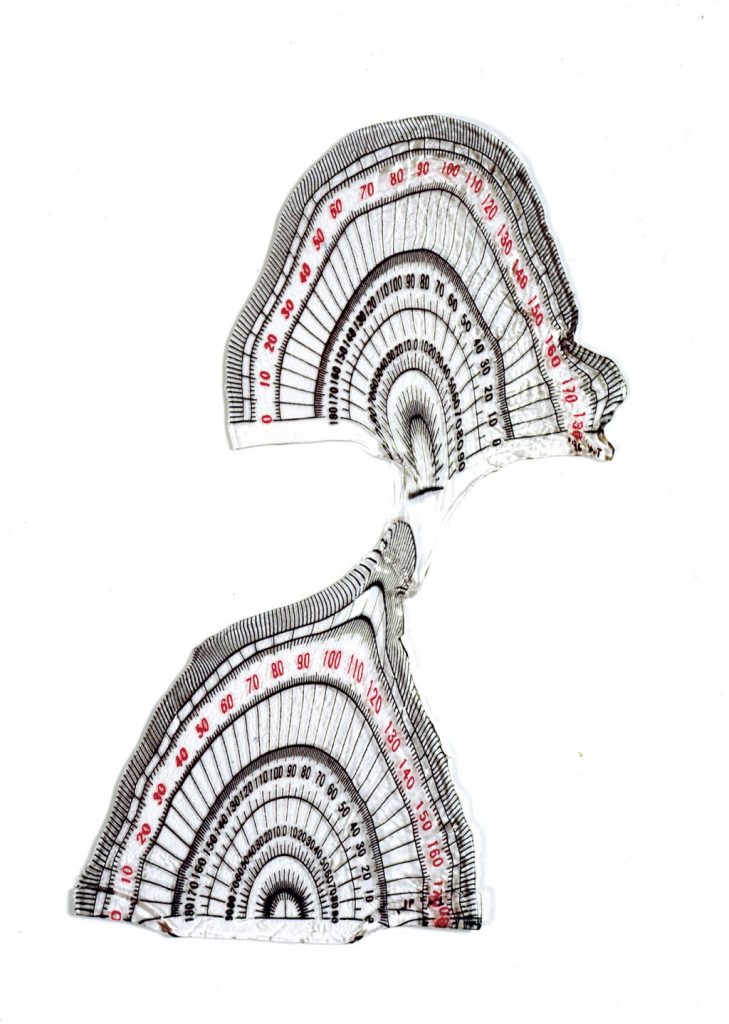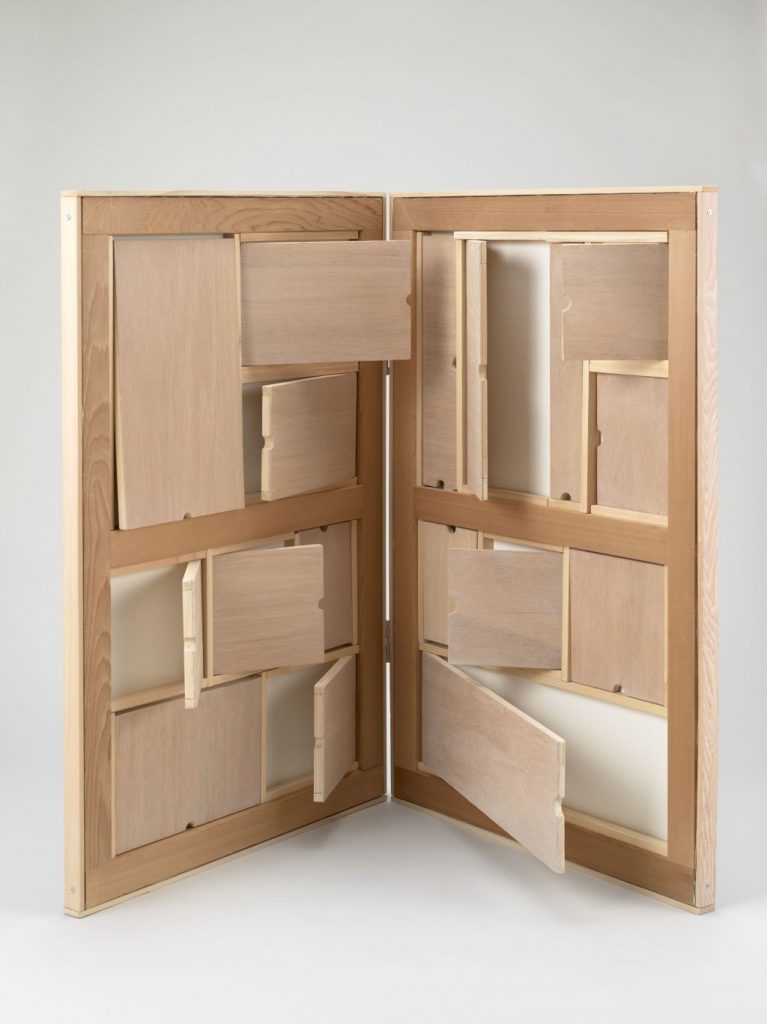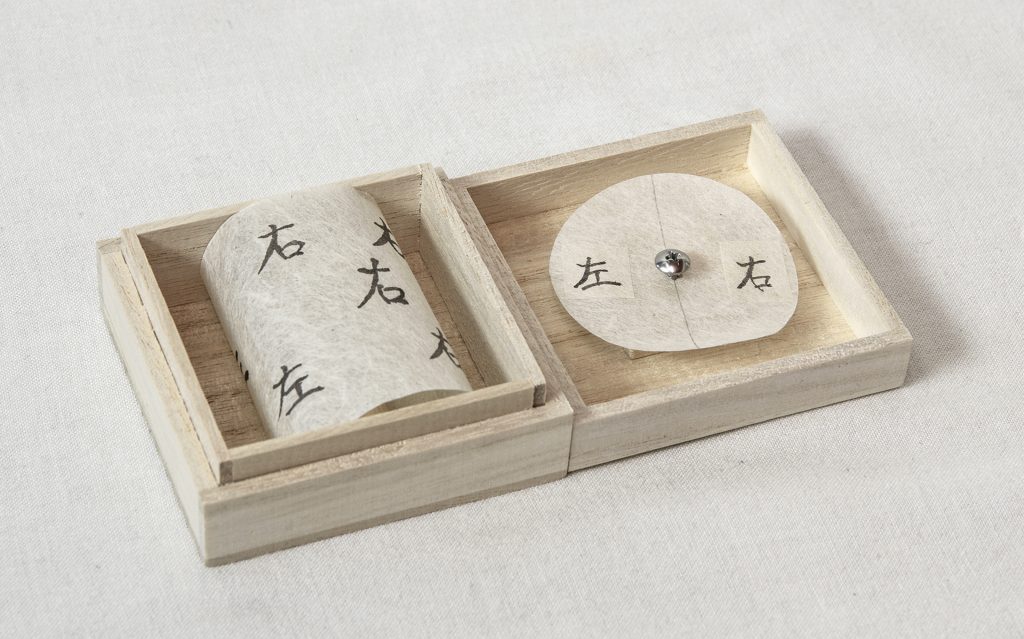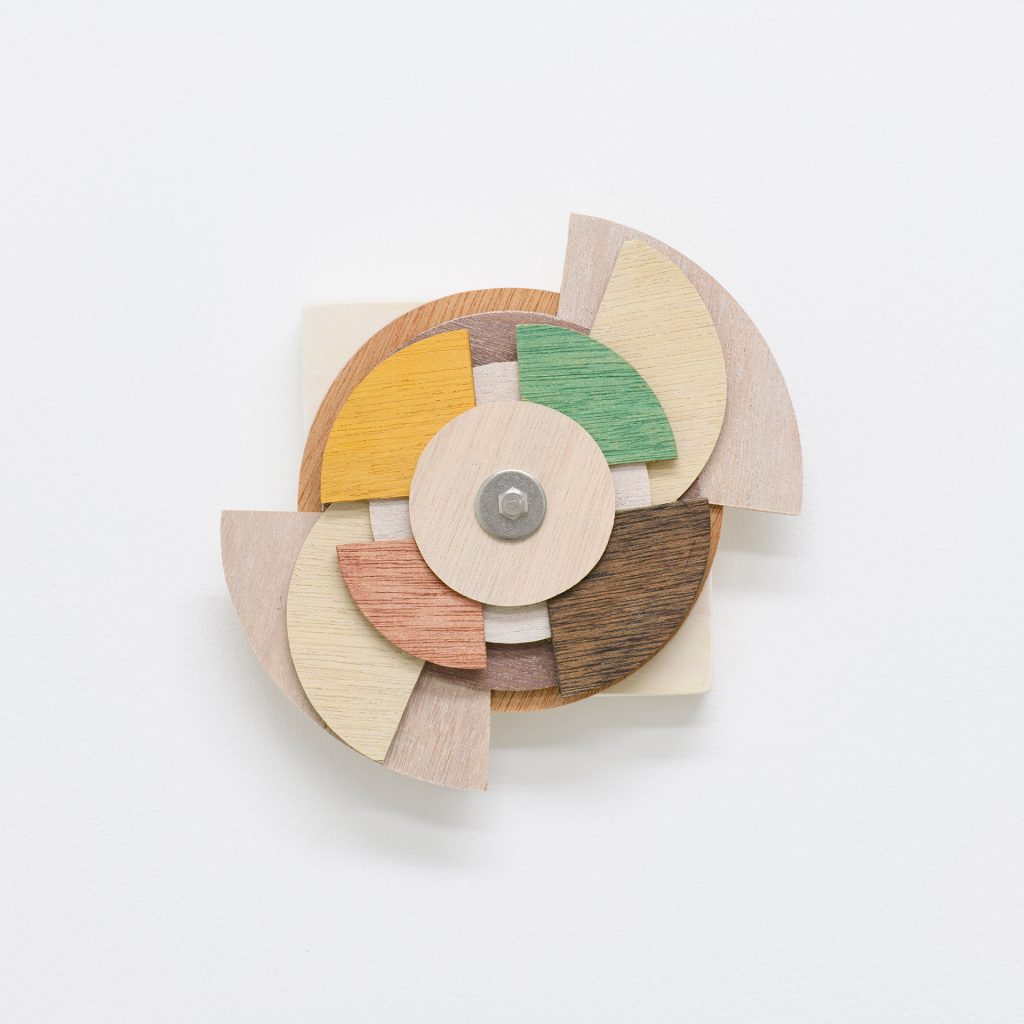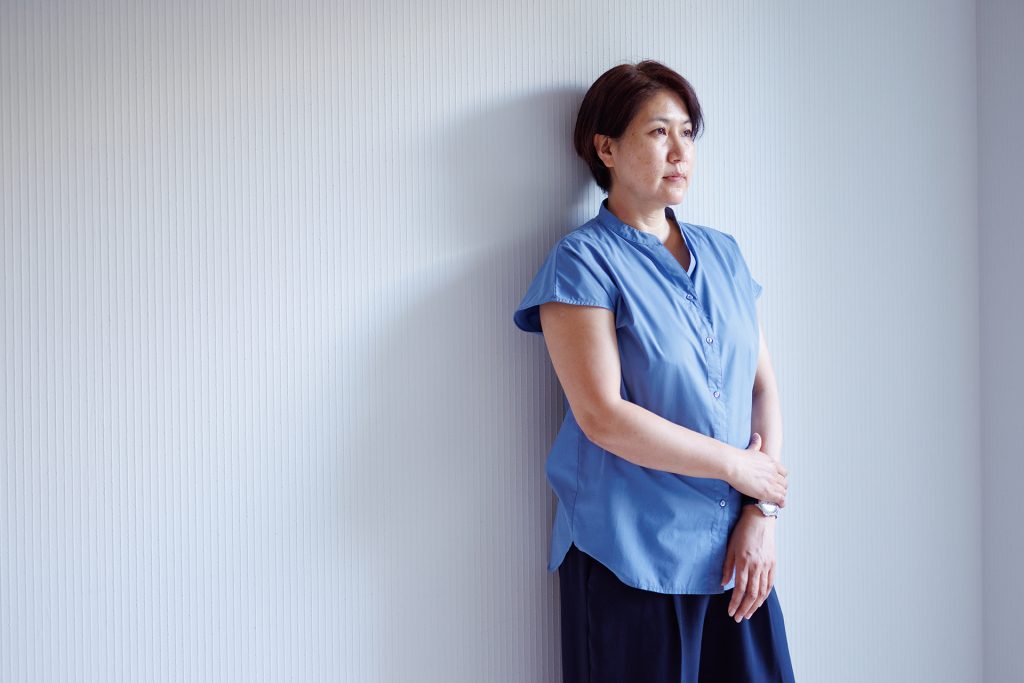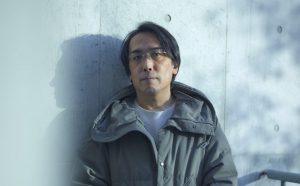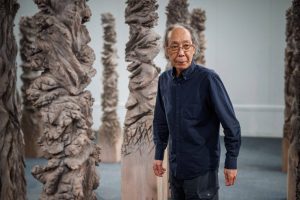Toyoshima Koji Enokura, who was teaching at the University of the Arts at the time, asked at a critique session, “Why do you paint on a square canvas?” It was a question not just to me but to all students, but I thought it was true that I had never thought about it. Then, I looked for a book at the university co-op store and happened to come across a book by Takahiko Iimura, a visual artist, titled Eizo jikken no tame ni: Text Concept Performance (lit. For visual experiments: text, concept, and performance)(Seidosha, 1986).
There, he introduced a story about an experimental production that used the squares of manuscript paper as the film’s score. I’ve learned from there that one expression can be replaced by another format, and that the systems and rules that people unconsciously share can also be used for expression. Answer Sheet (1989-90), in which the outside of the entry fields of an answer sheet are filled in, was the first work inspired by this book.
──Was there also a sense of discomfort with the act of “painting”?
Toyoshima There was. Essentially, I enjoy painting, so when I paint, I focus on it, and I can paint in abstract expressionist style even though I don’t know what I’m doing properly. But viewers would still say, “That’s nice.” I could create an infinite number of paintings like this, but it shouldn’t be such a superlative thing. I had such doubts, and Mr. Iimura’s book showed me that painting is also a conceptual act. I think that is what made me feel comfortable.
──When you were a student, it was a time when neo-expressionism was gaining momentum. On the other hand, I believe the influence of the Mono-ha was still strong within the university, including figures like Mr. Enokura you mentioned earlier. What was the mood of the art scene at that time?
Toyoshima When I looked around, I could see a lot of works that are kind of neo-expressionistic. They seemed superficial, but there were people who paint such works without thinking much about it. I didn’t understand that. What I wanted to do was to engage in introspection, build upon my knowledge, and develop my own unique expression. During this period, Mr. Iimura’s book served as a guiding light for me in creating my own artistic method. Although the works introduced in the book were created around the time of my birth, I found them remarkably accessible. I felt a disparity in the “depth of understanding” between the words and things that were happening around me and the insights from slightly earlier time that I sought out myself. When I realized this, I began creating works based on the knowledge I gained myself as a compass for my journey.
──I understand that attending Sunday school at church when you were a young child played a pivotal part of your life. Did you choose to attend church voluntarily?
Toyoshima When I was the final year of nursery school, I came to realize that there were adults who lived their lives with a sense of morality slightly purer than everyday values, although it might be an exaggeration to call it “righteousness.” Witnessing frequent heated arguments between adults, whether it was between my parents or things that happened at my father’s workplace, filled me with apprehension. Trying to distance myself from such conflicts, I sought solace in a place free of such tension. I continued attending Sunday school until around the time I entered high school.
──How has that experience influenced you?
Toyoshima It might be instilled in me as a sense of righteousness. In the Gospel of Matthew, it says “If someone strikes you on the right cheek, turn to him the other cheek.” Even as a child, there was in that phrase something that convinced me somehow, the way of doing things back in a less direct manner. I think I have been quite conscious of that kind of attitude.


